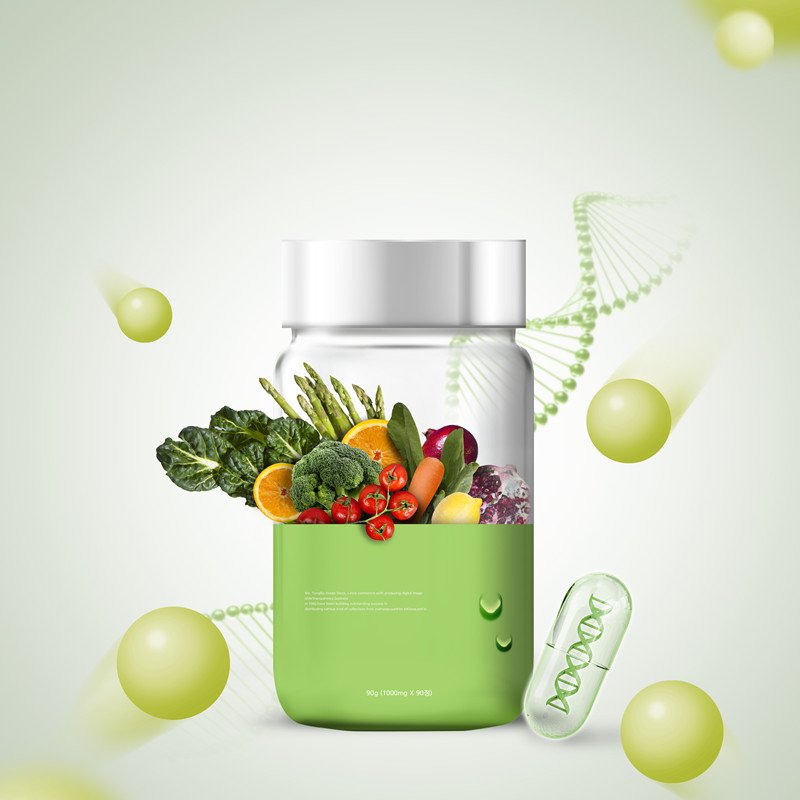This article briefly introduces the international trade situation of China’s dietary supplements from the perspective of market and variety.
1. General introduction of import and export
In 2018, China’s import and export of dietary supplements reached US$4.68 billion, an increase of 31.5% over 2017 (unless otherwise specified, the same below), a record high. In 2018, China’s export of dietary supplements was US$1.67 billion, a year-on-year increase of 21.8%. The main export markets are the United States, Hong Kong, Japan, Indonesia, and other countries or regions. The provinces and cities with the largest export volume are Jiangsu, Guangdong, Shanghai, Shandong, and Zhejiang.
In 2018, China’s import of dietary nutritional supplements was US$3.01 billion, a year-on-year increase of 37.7%. Imported products mainly come from Australia, the United States, and Germany. The provinces and cities with large imports are Guangdong, Zhejiang, Shanghai, and Beijing. The above-mentioned regions have developed economies and strong consumption capacity for health products. E-commerce, especially cross-border e-commerce, has developed rapidly. Imports of Swisse, Blackmores, and other branded products from Australia are among the best. According to statistics from the Medical Insurance Chamber of Commerce, the compound annual growth rate of China’s dietary supplement imports from 2008 to 2018 was as high as 19.9%.
According to customs data, China’s top 10 import markets for dietary supplements in 2018 were Australia, the United States, Germany, Thailand, Indonesia, Japan, Taiwan, South Korea, Malaysia, and Canada. Among them, Australia has surpassed the United States to become China’s largest importer by seizing new models such as e-commerce in recent years, with an import value of US$670 million, accounting for 22.3%. Followed by the United States, imports amounted to 620 million U.S. dollars, accounting for 20.4%. However, the United States has strong nutrition and health innovation and technology research and development capabilities and is still a leader in the global dietary supplement industry. With its good reputation and quality, Germany has also been widely recognized by Chinese consumers, with imports amounting to US$280 million, accounting for 9.2%. In addition, the products of Thailand, Indonesia, Japan, and other countries (regions) are also deeply loved by Chinese consumers.
According to customs data, vitamin products have the largest import value, followed by fish oil products (including DHA/EPA/fish oil powder) and calcium products. Besides, probiotics, protein powder, glucosamine, collagen, and chondroitin also have a place in China. Coenzyme Q10, lutein, iron, zinc, and anthocyanins have also received consumers’ attention.

2. Raw material import and export analysis
Raw materials are the guarantee and basis for the quality of dietary nutritional supplements, and China is the world’s largest producer and exporter of dietary nutritional supplements raw materials. Through the import and export of raw materials, the market situation and development trend of the world’s dietary supplements can be preliminarily predicted.
There are many types of dietary supplements raw materials, including vitamins, minerals, amino acids, extracts (plants, animals), probiotics, etc. Among them, China has strong advantages in the production and export of raw materials for dietary supplements such as vitamins, amino acids, and plant extracts.
In the export of raw materials, the performance of extracts in 2018 showed “explosive” growth. The export value increased from US$2.01 billion in 2017 to US$2.368 billion, and the year-on-year growth rate soared from 4.33% to 17.79%. In terms of export varieties, the top 10 hot varieties are stevia leaf extract, eucalyptus oil, menthol, licorice extract, marigold extract, bilberry extract, hesperidin, ginkgo leaf extract, rutin extract Things. Its total export value exceeds US$1 billion, which is close to 50% of extract exports. The export value of vitamin raw materials reached US$3.44 billion, a year-on-year increase of 8.85%. The export value of chondroitin sulfate was US$2.04, and the export value of amino acid raw materials was US$2.57 billion, a year-on-year increase of 10.69%.
In terms of exports, vitamins, amino acids, and plant extracts are the main export categories of China’s dietary nutritional supplement raw materials, and they are growing. Among them, vitamins are the largest export category of raw materials, followed by amino acids. From the perspective of imports, amino acids, plant extracts, and vitamins are also relatively large categories of imports.

Analyzing the export value of dietary nutritional supplement raw materials in 2018, it is found that the export value of vitamin E, vitamin C, and lysine ranks among the top three, at 651 million U.S. dollars, 513 million U.S. dollars, and 450 million U.S. dollars, respectively. Vitamin E in particular has increased year-on-year. 41.4%. The export situation of raw materials is consistent with the situation of the foreign dietary supplement market. In the current international market vitamin products still occupy an important position. In addition, the export growth of essential oil products is also very impressive, with a growth rate of 70.60%.From the perspective of imported dietary supplement raw materials, the import amount of vitamin A, fish oil, vitamin E, and non-citrus essential oils rank high. On the one hand, China has a huge market for nutrition and health; on the other hand, the OEM market for dietary supplements in China is very active. Under the condition of product quality upgrading, companies also purchase high-quality and low-cost raw materials from around the world to ensure product quality.
- China is a major producer and exporter of vitamin raw materials, and the export of vitamin raw materials occupies an important position in China’s vitamin industry. Asia, Europe, and North America are the main export markets, with potential markets developing rapidly. From the perspective of the export market of vitamin raw materials, Asia, Europe, and North America are the main export markets, occupying 87.3% of the market. However, in terms of growth rate, the African and Latin American markets have high growth rates and have great market potential.
- The applicable fields of plant extracts include medicines, dietary supplements, foods, cosmetics, etc., which have the characteristics of rigid demand. With the transformation of people’s consumption concepts, the pursuit of healthy, green, and pollution-free foods has become increasingly intense, and the plant extract industry is even more favored by the pharmaceutical and food industries. Judging from the current global plant extract application structure distribution, nutritional and healthy food has become the largest demand market for plant extracts.
- With the research and popularization of nutrition education, amino acid products have a wide range of uses, and their nutritional effects on the body are increasingly accepted by consumers around the world. The importance of amino acids in the health industry has become increasingly prominent, and the worldwide demand for amino acids has increased, which is a factor in the increase in the export of amino acid raw materials. The import and export volume showed a slow-growth trend. Chinese amino acid raw materials are mainly exported to Asia and Europe. From a country perspective, the top 10 exporting countries are the United States, the Netherlands, Thailand, Germany, Vietnam, India, Japan, South Korea, Indonesia, and Belgium.
- So far, China is the world’s most important coenzyme Q10 supplier, and China accounts for five of the world’s six largest coenzyme Q10 suppliers. The export market of Coenzyme Q10 raw materials is mainly North America. The United States is the main market, followed by Germany, Canada, and Australia.
- In 2018, China’s import and export value of fish oil raw materials was US$177.6 million, a year-on-year increase of 4.39%. In terms of export markets, Europe, North America, and Asia are the main export markets for China’s fish oil raw materials. The European market has great potential for Chinese fish oil demand. In terms of specific countries, the main countries that China’s fish oil raw materials export are Chile, Canada, the United States, Spain, and India.

